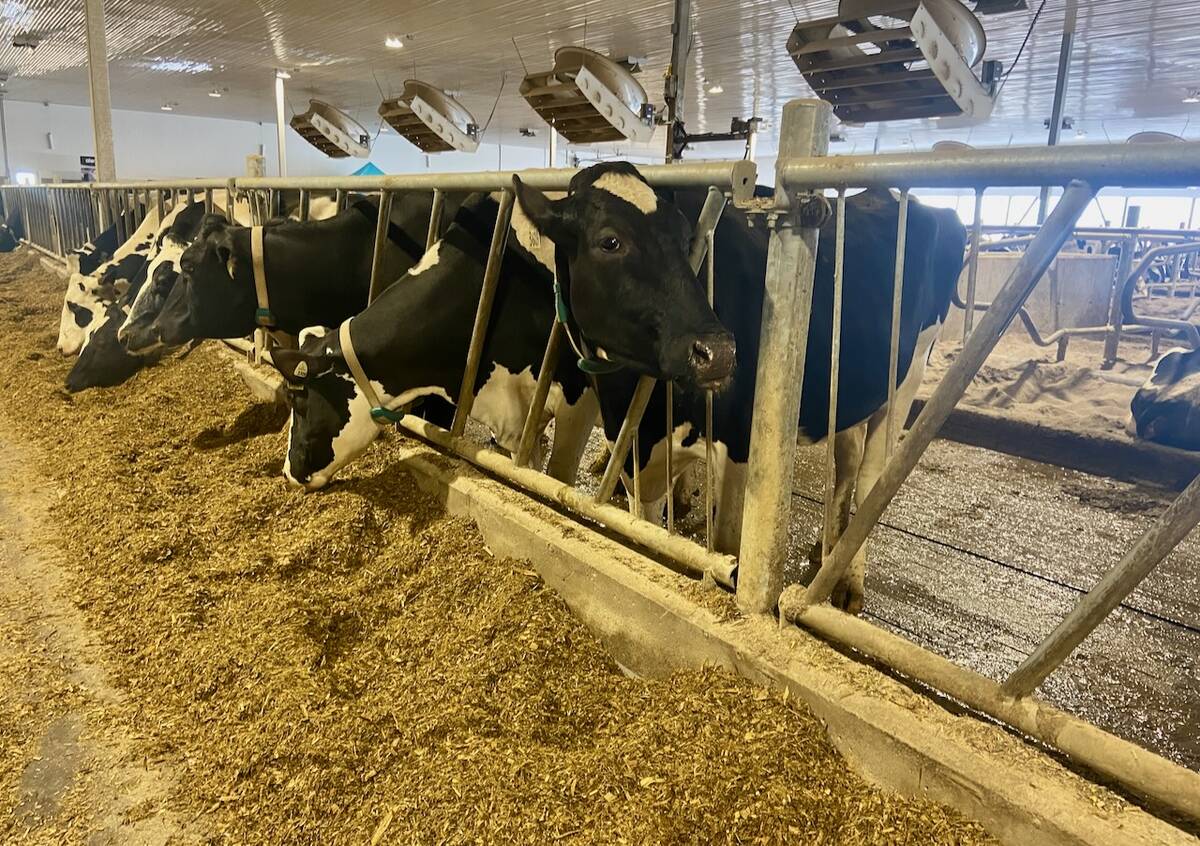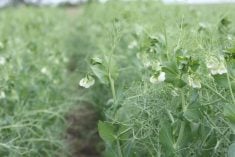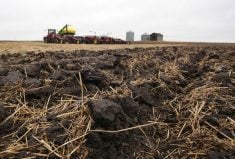Agriculture Canada acknowledges that a changing climate will result in crop shifts and a need for increased irrigation
The federal government believes farmers and Canada’s agriculture industry should cut greenhouse gas emissions.
Al Mussell, an agricultural economist, says Canada’s policy for agriculture should focus on adaptation.
The Western Producer submitted questions to an Agriculture and Agri-Food Canada spokesperson for a reaction to Mussell’s proposal.
Read Also

U.S. farm group supports supply management
U.S. grassroots farm advocacy group pushing new agriculture legislation that would move towards supply management like Canada has for dairy industry
Western Producer: Al Mussell, an agricultural economist, published a report in June arguing that climate change policy in Canadian agriculture should be about adaptation, not mitigation. What do you think of his argument?
Agriculture Canada: Actions to address climate change mitigation and adaptation are both essential to supporting an agriculture sector that is sustainable over the longer term. Agriculture is one of the sectors most susceptible to the impacts of climate change. Farmers are dealing with extreme weather events that are increasing in frequency and severity, which creates uncertainty and impacts their operations and profitability.
While the sector needs support to help them adapt to the changing climate, producers and the broader sector also have a role to play in reducing emissions, which is an essential part of the fight against climate change….
The Government of Canada continues to work with provinces and territories and other stakeholders to support the agriculture sector in developing and adopting new management practices and innovative technologies to address both climate change mitigation and adaptation…
This includes the $250 million cost-shared Resilient Agricultural Landscapes Program, which helps producers to increase the environmental resiliency of agricultural land….
AAFC also supports and conducts science in a variety of areas that enhance sector adaptation and resiliency, including monitoring and improving the health of agricultural soils, developing drought-resilient seed and crop varieties, managing water and biodiversity on the agricultural landscape, and providing producers with the tools to help them better adapt to climate change.
WP: An Agriculture Canada document, agriculture.canada.ca/en/environment/climate-change/climate-change-impacts-agriculture, says there are opportunities and challenges for agriculture from a changing climate. Do the benefits provide a counter-balance to the risks?
AAFC: Increased temperatures, shifting precipitation patterns and an increase in frequency and intensity of extreme events will bring risks to Canada’s agriculture sector, affecting costs, yields and profits….
Adapting to the natural variability in weather and climate is something farmers and ranchers have always done; however, with the predicted increases in climate and weather-related risks, agricultural systems need to adapt to a new suite of climate change impacts….
Climate change will likely result in crop distribution shifts. For example, parts of southern Saskatchewan and Alberta may become less suitable for heat-sensitive crops such as canola. However, corn, soybeans and fall-seeded pulse crops… may become more suitable and expand in seeded area …
Many regions north of the current agricultural extent could become suitable for canola production, such as the Peace River region, and lands in Ontario and Quebec could become prime canola-growing land. Corn and soybeans may see an expansion in Atlantic Canada and into new regions in Quebec and Ontario as growing seasons lengthen….
Changes in temperature and precipitation resulting from climate change will increase the need for irrigation, particularly across the Prairies and interior B.C. where moisture deficits will be greatest. However, the increased variability of rainfall across the country may mean that supplemental irrigation will be required in many regions and cropping systems, including those that are traditionally rain-fed….
In addition to overall warming and shifting precipitation patterns, atmospheric carbon dioxide levels will be higher. In the case of some crops, such as wheat, barley, canola, soybeans, potatoes and most forage crops, this may increase overall yields, although the nutritional quality of many crops may suffer, with reductions in zinc and iron, as well as protein content.
WP: An Environment Canada expert in hydrology, Barrie Bonsal, says water availability and water management are the big unknowns for western Canadian agriculture, due to climate change. If he’s correct, why isn’t AAFC focusing its climate change efforts on water management in agriculture?
AAFC: The Government of Canada recognizes the importance for farmers to have a clean, reliable source of water for their operations in order to continue producing high-quality food and other agricultural products.
It is important to recognize that while agriculture and water are areas of shared jurisdiction between the federal and provincial/territorial governments, the provinces and territories have primary jurisdiction over the ownership and use of land and natural resources.
However, the Government of Canada is committed to helping the agricultural sector contribute to the protection and management of Canada’s water resources….
AAFC has a long history researching, developing and promoting the sustainable management of water resources, including conducting and funding collaborative agricultural research and technology development, and providing timely data and analysis on agroclimatic conditions impacting Canada’s farmers and the agriculture sector through the Canadian Drought Monitor….
Federal, provincial and territorial (FPT) governments recognize the challenge of sustainable water management under a changing climate and working with producers to improve water management across Canada….
For example, as part of the Government of Saskatchewan’s suite of FPT cost-shared programming, the Farm and Ranch Water Infrastructure Program provides rebates to develop secure and sustainable agricultural sources, such as wells, dugouts, pipelines and dams, as well as supporting rural well decommissioning. The program is designed to support the development of secure and sustainable water resources for agricultural use in Saskatchewan, mitigate the impact of drought, improve public safety and reduce potential groundwater contamination through well decommissioning.
WP: Is this mitigation policy about mitigation, or is it a policy to change Canadian agriculture into something more sustainable? Is Canada’s current production model for crops and livestock sustainable?
AAFC: Taking steps to reducing greenhouse gas emissions is a concrete action that can address some of the effects of climate change. In recognition of this, and as a party to the Paris Agreement, the Government of Canada has committed to a national GHG emissions reduction target of 40 to 45 percent below 2005 levels by 2030 and reaching net-zero emissions by 2050.
These targets reflect the level of ambition that is required to ensure the agriculture sector and broader economy are able to thrive for generations to come. Achieving Canada’s climate goals requires action by all Canadians and all economic sectors, including agriculture….
Climate change mitigation includes reducing sources of GHG emissions, as well as increasing carbon sequestration…. Some practices that can support mitigation on-farm include reduced tillage, planting legumes, improving nutrient management, and managing and restoring grasslands, all of which contribute to mitigation while also supporting sector-wide sustainability. Farmers across the country are adopting these sustainable practices and over the last two decades, GHG emissions have remained fairly stable, despite significant growth in production.
















